Join me for a magical deep dive into traveling Italy by train—featuring missed ferries, carsickness in the Dolomites, and why you should study up on your toll booth etiquette. In this guide, I take care of all the logistics for you. Every train, car, and boat transfer is accounted for in the day-by-day guide below. Check out my tips for navigating 14 days in Northern Italy by train transport!

Why We Traveled in August
We traveled from August 21 – September 3 (Labor Day Weekend). Many people say this isn’t an ideal time to visit since much of Italy shuts down in August.
At this time of year, many Italians head out on coastal vacations to escape the stifling heat of the city centers.
We did a little research beforehand, but honestly, we didn’t mind going in with no expectations!
It worked best with our schedule, and we figured if the streets were emptier and a few restaurants were closed, we’d just roll with it. And roll with it, we did.
2 Week Itinerary in Northern Italy
- Day 1*—Wednesday: Travel day to MXP
- Day 2—Thursday: Arrival in Milan
- Day 3—Friday: Milan
- Day 4—Saturday: Day trip to Lake Como
- Day 5*—Sunday: Travel day to Marco Polo Airport car rental / drive to Dolomites
- Day 6—Monday: Dolomites
- Day 7—Tuesday: Dolomites
- Day 8*—Wednesday: Travel day to Venice
- Day 9—Thursday: Venice
- Day 10*—Friday: Travel day to Florence
- Day 11—Saturday: Florence
- Day 12—Sunday: Florence
- Day 13—Monday: Florence
- Day 14*—Tuesday: Travel day back home
* Travel days highlighted in red and marked with an asterisk
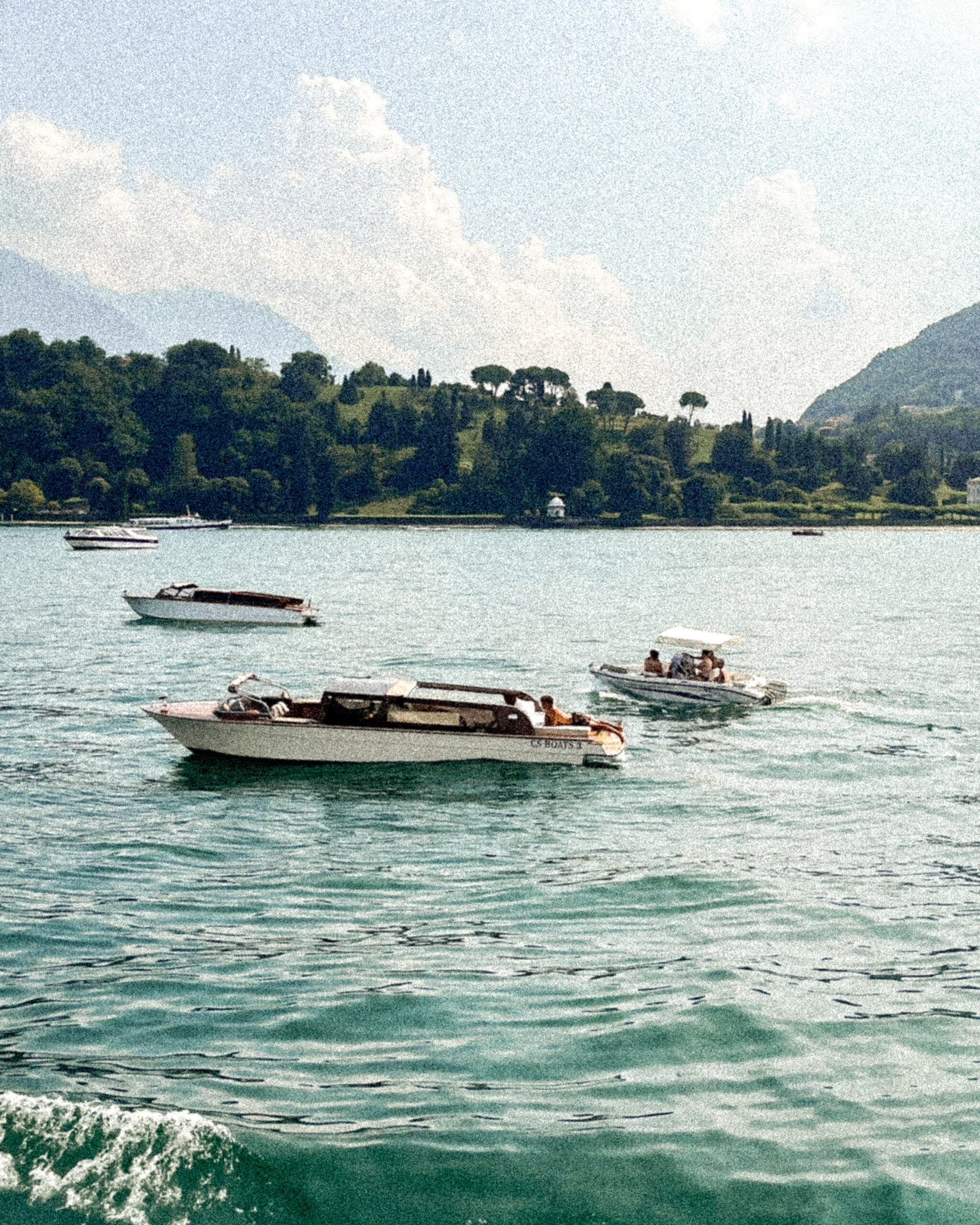
Day 1–4: Milan to Lake Como Day Trip by Train
Dates: Wednesday, August 21 – Saturday, August 24
Wednesday – Thursday
- Flight: United Airlines to Milan (MXP)
- Arrival: 11:00 a.m.
- Transfer: Walk to Airbnb in Milan
Rather than jumping right in on the first day, we started our trip slowly by getting acquainted with our surroundings and walking (a lot!) to fend off the jet lag.
Friday
We spent our first full day in Italy exploring our peaceful Milan neighborhood, which was located next to great shopping and sightseeing.
Saturday
- 8:45 a.m. Milano Centrale → Como S. Giovanni
- Took the public ferry to Bellagio (~2 hours)
- Return: Bellagio → Como (delayed due to overcapacity)
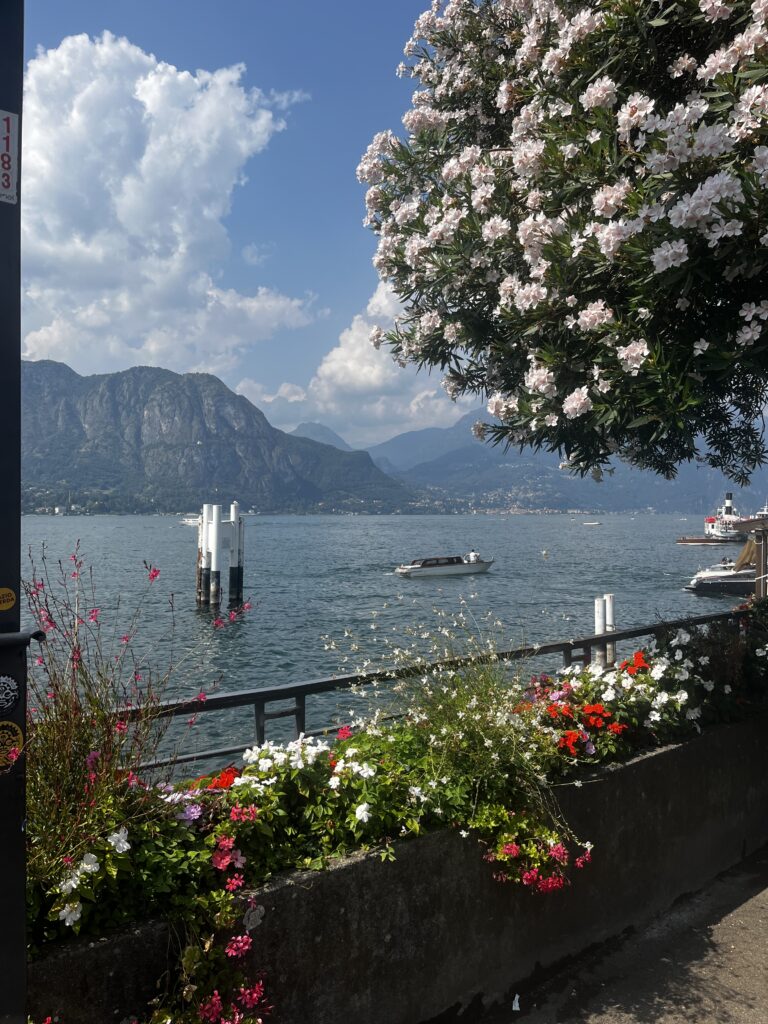
The next day, we day tripped to Como by train, jumped on the 2-hour public ferry for a whirlwind visit to Bellagio, ate gelato with a view, and got in line for our return ferry a little over an hour later.
Even though we arrived at the port on time and had valid return tickets, we weren’t allowed to get on the ferry—apparently, a pre-booked tour group got priority. Everyone around us was just as confused. 😓
We ended up waiting in line for almost an hour to catch the next ferry, which made us miss our return train to Milan. It wasn’t a big deal, though. When you’re traveling northern Italy by train, you’ll find routes between Milan and Como are frequent, affordable, and easy to book.
Pro Tip: Download the Omio App. You need it if you want the easiest, most seamless train experience in Italy.
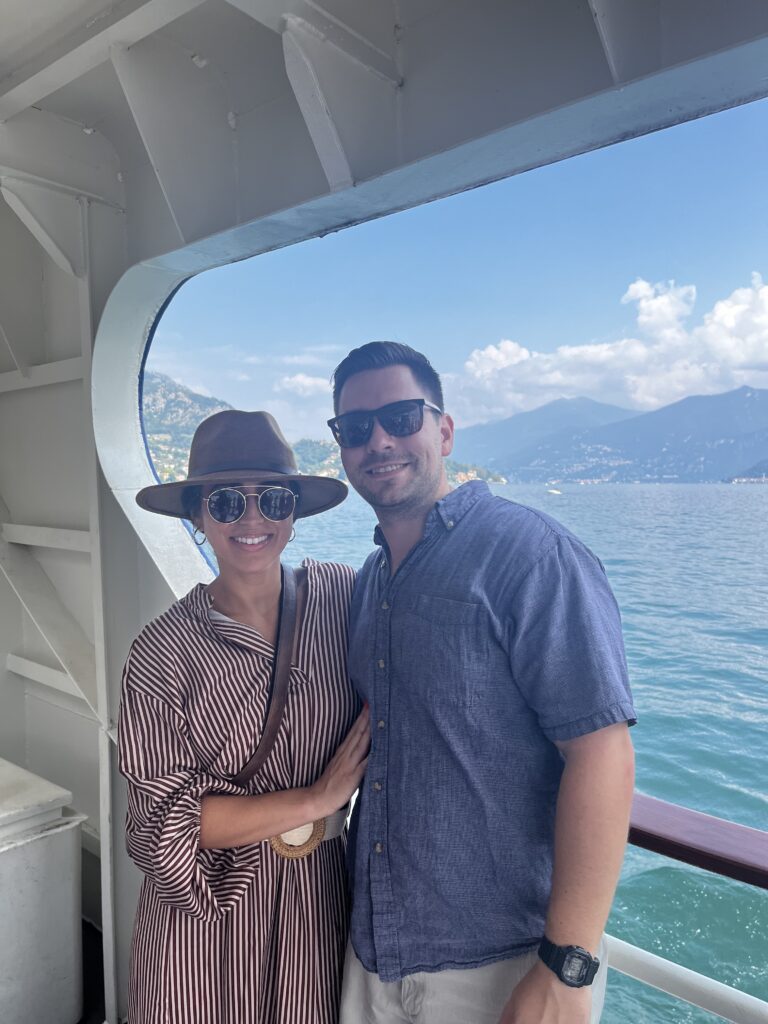


Read More: Discover The Most Famous Food and Wine in Every Region of Italy
Day 5: Train Transfer to Marco Polo Airport
Date: Sunday, August 25
Sunday
- Transfer 1: 8:50 a.m. Milano Centrale → Verona Porta Nuova
- Transfer 2: 11:06 a.m. Verona Porta Nuova → Venezia Mestre
- Transfer 3: 1:22 p.m. Venezia Mestre → Gaggio Porta Est (bus)
This part of our two week Italy itinerary required some finessing. We were committed to traveling Italy mostly by train, but after hours of research, it became clear: relying solely on public transit in the Dolomites is borderline impossible. The region is too spread out and mountainous for uninterrupted rail travel, so we rented a car.
We checked out of our Milan Airbnb on Sunday morning and took the 8:50 a.m. train to Verona Porta Nuova. From there, we transferred to Venezia Mestre. After a short walk to the nearby bus station, we hopped on a bus to Gaggio Porta Est by Marco Polo Airport.
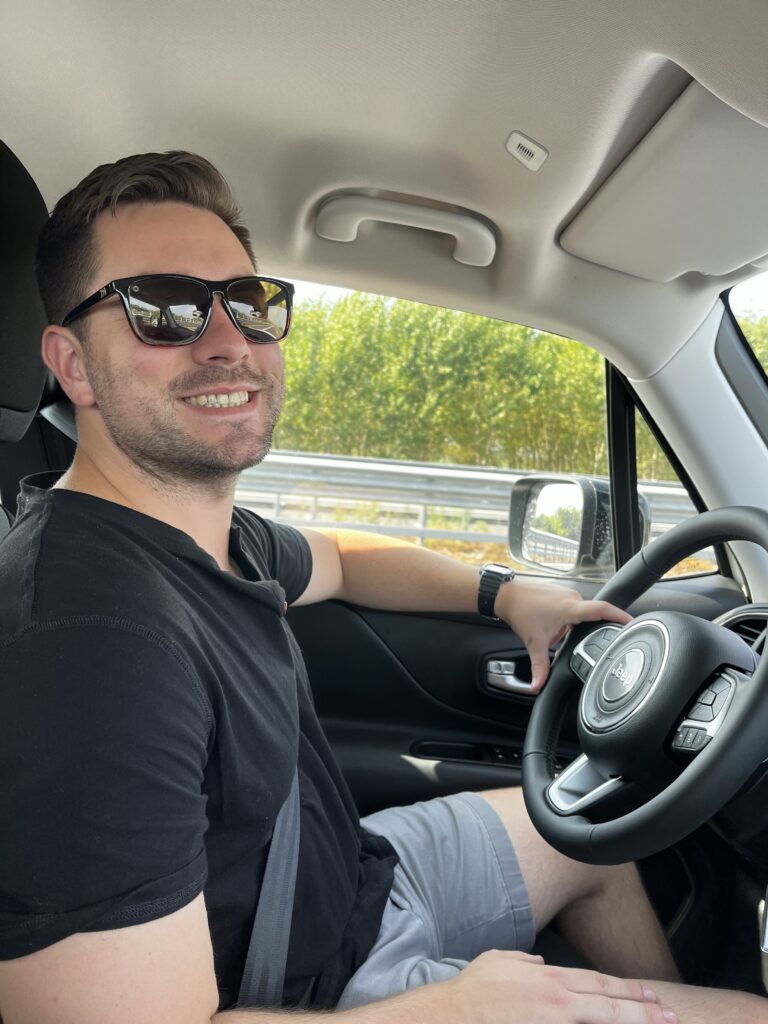

Train & Rental Car Booking Tips in Italy
Note: This full itinerary (train + bus) was easily booked through Omio. But once we got to the bus station, there were no signs or clear instructions. We eventually got on a bus, and I literally remember thinking “I really hope we’re on the right bus!” from the minute we started driving until they dropped us off right in front of the airport (not Gaggio Porta Est, which is 5km away).
To this day, I’m 99% sure it was not the right bus(???) But hey, it actually worked out better for us.😂
Lesson: Even when you plan and pre-book your transportation, you have to stay flexible. Use context clues and (sometimes) follow the crowd.
Our total travel time from Milan to Marco Polo Airport: 5 hours.

At the Marco Polo Airport rental car area (which is tiny and hot), we had to wait a while. Driving a manual car is a major advantage in Europe—you’ll have more options.
We joked that we could always spot American tourists on the road by their Jeep Renegades. Because yep, we got one too. It was basically the only automatic transmission option available.
Day 5–7: Traveling By Car in The Dolomites
Dates: Sunday August 25 – Tuesday, August 27
Sunday (cont’d):
- Route: Drove from Marco Polo airport to Venas di Cadore
- Travel times: 2:30 – 4 pm
- Lodging: Checked into Airbnb in Venas di Cadore
Monday – Tuesday
We spent the most magical two days exploring the Dolomites region, hiking Lago di Sorapis, and renting bikes to see the sights!
The drive up to Venas di Cadore from Venice was an easy and beautiful 1.5 hour drive. Minus the toll…

Pro tip before driving: take a quick refresher course on how the toll booths work in Italy. We had to radio a faceless voice to beg for mercy and, and even then, they just opened the gate and let us through probably because they thought we were idiots. Later, we realized we were supposed to insert the little ticket we got in Venice to calculate the toll rate. We’re still expecting that (well deserved) bill in the mail.
The roads through the Dolomites are narrow and, if there’s construction (there was), you might have to wait to pass through certain areas. Coming from the Gulf Coast, it reminded us of driving Highway 98… only one road to everywhere (IYKYK).
If you get carsick, load up every purse, bag, and pocket with extra doses of Dramamine. I was personally hoping for a cute, albeit adrenaline junkie, Italian Job moment around every corner. On the other hand, my husband, who is very prone to carsickness, thanked his lucky stars he drove instead of me.
Expect high elevations, endless switchbacks, blind curves, and breathtaking views. Oh, and make sure you’re keeping an eye out for bikers, although bike paths are very well marked here.
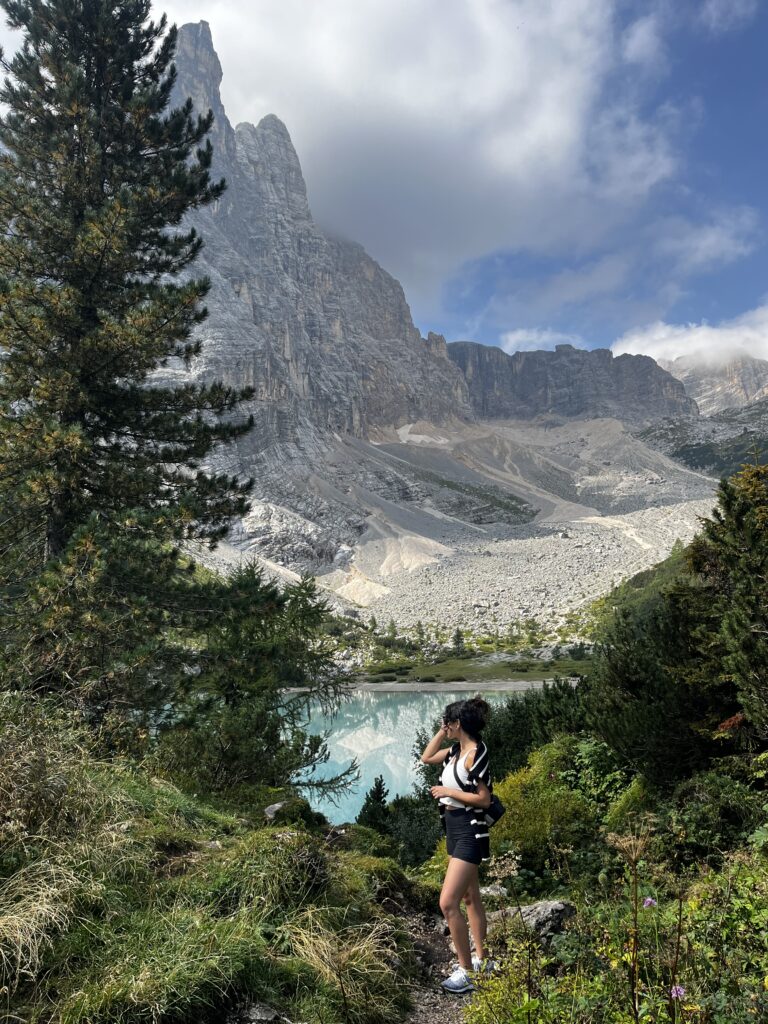


Day 8–9: Venice by Water Taxi
Dates: Wednesday, August 28 – Thursday, August 29
After our dreamy jaunt in the Dolomites, we returned to Venice to drop off the rental car and stay in the city for a couple of nights. This is where the planning really paid off. Once we dropped off the car, we walked straight to the vaporetto pickup area at Marco Polo and took a boat to the Spirito Santo stop by our Airbnb.
We used the Alilaguna Boat Transfer and paid $43 USD total for two one-way tickets.

Important: You must show your smartphone voucher at the Alilaguna kiosk to get a paper ticket before boarding. You can’t board with just the mobile voucher; you need to validate the paper ticket at the turnstile.
The ride felt like a bus on water. It made multiple stops and wasn’t the most comfortable experience—long, hot, and stuffy. But it’s a very authentic local method, and it gets you as close as possible to your final destination.
Wednesday:
- Car transfer: Dolomites → Marco Polo Airport
- Boat transfer: Alilaguna Water Taxi (Marco Polo → Spirito Santo stop)
Thursday:
We had a blast getting lost among the romantic Venice streets, shopping at local vendors, attending a Vivaldi tribute concert, and discovering all the good eats.
Day 10–14: Wrapping Up in Florence
Dates: Friday, August 30 – Tuesday, September 3
Friday
- Water Taxi: Spirito Santo stop → Venezia S. Lucia
- Train: Venezia S. Lucia → Firenze S. M. Novella
- Walk: Firenze S. M. Novella → Airbnb (20 minute walk)
To travel to Florence, we took a water taxi to Venezia S. Lucia and a train to Firenze S. M. Novella. From the train station, we walked about 20 minutes with our bags to our Airbnb near Pitti Palace—it helped us get our bearings and see the city a bit.
Saturday – Monday
We explored Florence, visited the Uffizi Gallery, Piazza del Duomo, Ponte Vecchio bridge, Pitti Palace, Boboli Gardens, Piazzale Michelangelo, Mercato di Sant’Ambrogio, and Abbazia di San Miniato al Monte.
We spent our final four days in Florence wandering, eating copious amounts of gelato, and enjoying the slower pace. It was the perfect note to end our trip!


Tuesday
On Monday night, we pre-booked an early morning Uber pickup from our Airbnb to take us to Amerigo Vespucci Airport in Florence on Tuesday.
Reminder: Pack light. Especially if you’re traveling the majority of northern Italy by train.
Travel Tips for Navigating Northern Italy By Train
- Pack efficiently and as light as possible! Regional trains vary in luggage space. Overhead racks fit a duffel or backpack, but full-size suitcases? Don’t count on it!
- Use the space between back-to-back seats for your rolling luggage—but only if it’s carry-on sized.
- Always validate your ticket before boarding. You can use the machines on the platform (they look like small barcode scanners), or book in the Omio app, which auto-validates for you.
- Screenshot your digital ticket in case you lose signal (especially if you’re traveling Wi-Fi only, like we did).
- Bring a paper ticket backup. It’s always a good idea!


Great insights on traveling Northern Italy by train! Could you share any tips on avoiding ferry delays or managing tight connections? Planning a trip there and this info helps a lot.
Hi István! If you haven’t already downloaded the Omio App for train bookings, I highly recommend that for managing your trip. Another thing I love is the TripIt App which organizes all my travel bookings in sequential order so I’m always on schedule. For some areas you are unfamiliar with or excursions you are really looking forward to, consider booking a private guided tour with a local. They will keep you on track and help with any hiccups along the way. Another resource I love is the Untold Italy podcast and blog—they also have an FB group with great advice. Feel free to join my email list too for more tips: Newsletter Sign Up I hope this helps!
Really great to know! I’ve never gone by train but I’d love to go back – there’s just so much to see in the north. Thanks for sharing 🙂
There really is so much to see! I think I could have spent all 14 days in the Dolomites alone😍 Thanks for reading!